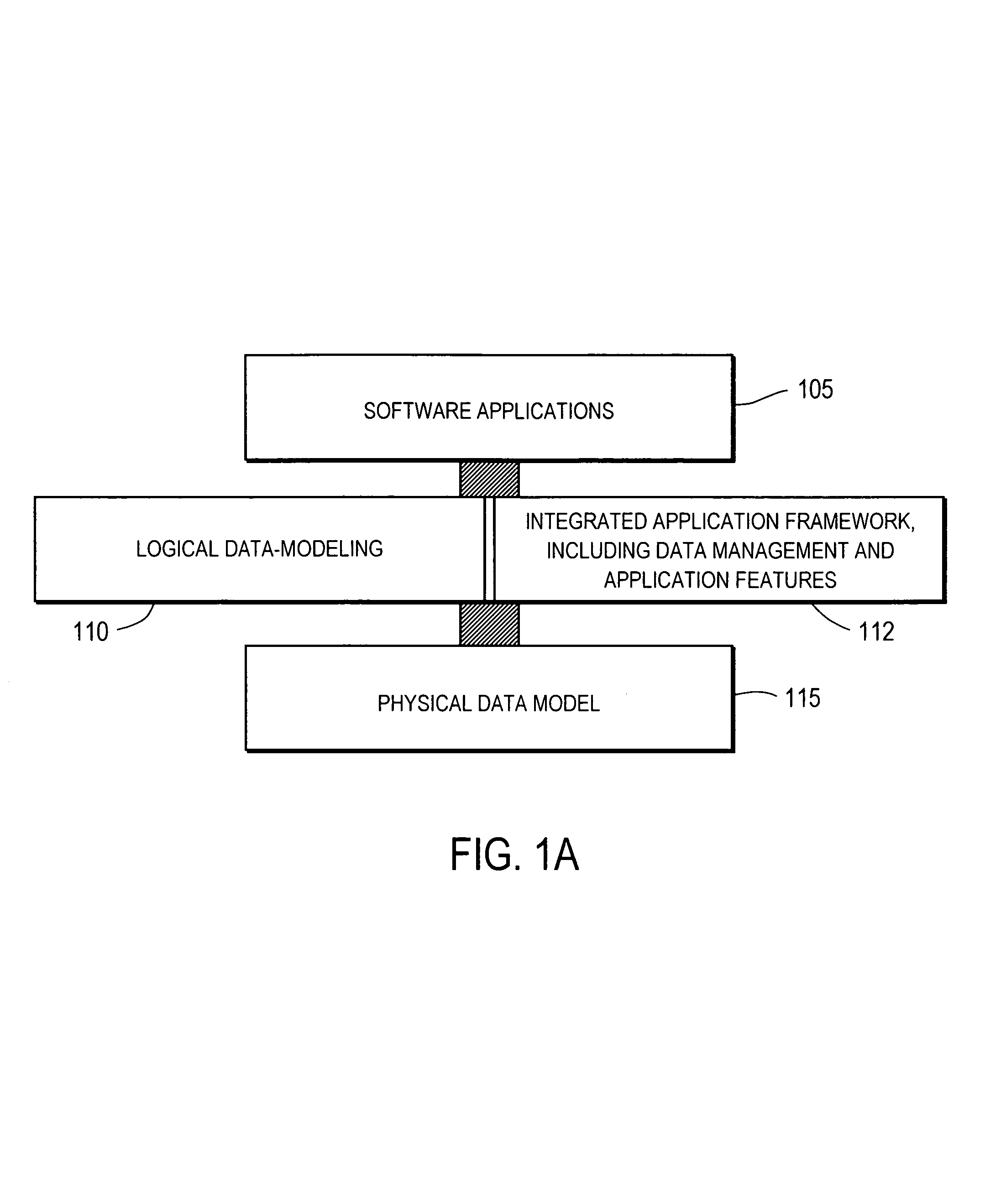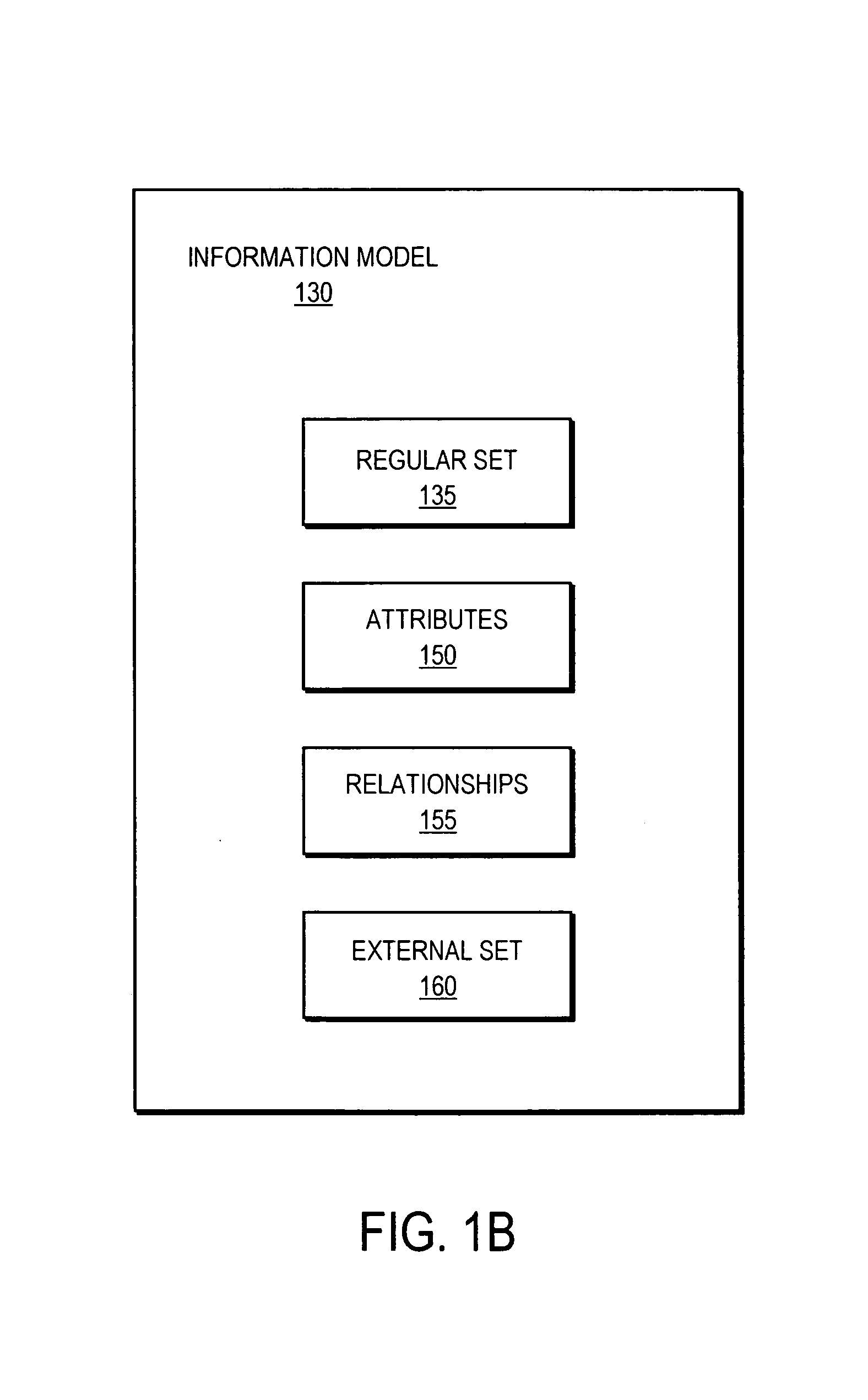Logical data modeling and integrated application framework
a logical data modeling and application framework technology, applied in the field of computer systems, can solve the problems unable to design and maintain large-scale applications, and largely non-automated application development, and achieve the effect of limiting the breadth of claims
- Summary
- Abstract
- Description
- Claims
- Application Information
AI Technical Summary
Benefits of technology
Problems solved by technology
Method used
Image
Examples
Embodiment Construction
[0066]Described herein is a system for providing application access to a database through a data-modeling and application framework. In one embodiment, a logical data model is defined using a series of graphical user interfaces (GUI) presented by the data-modeling framework. The data-modeling framework dynamically translates the logical data model into a physical data model. The data-modeling and application framework include functionalities that enhance features of the physical data model and dynamically translate changes to the physical data model as changes to the logical data model are made.
[0067]In the following description, for purposes of explanation, numerous specific details are set forth in order to provide a thorough understanding of the present invention. It will be evident, however, to one skilled in the art that the present invention may be practiced without these specific details. In other instances, well-known structures, processes and devices are shown in block diag...
PUM
 Login to View More
Login to View More Abstract
Description
Claims
Application Information
 Login to View More
Login to View More - R&D
- Intellectual Property
- Life Sciences
- Materials
- Tech Scout
- Unparalleled Data Quality
- Higher Quality Content
- 60% Fewer Hallucinations
Browse by: Latest US Patents, China's latest patents, Technical Efficacy Thesaurus, Application Domain, Technology Topic, Popular Technical Reports.
© 2025 PatSnap. All rights reserved.Legal|Privacy policy|Modern Slavery Act Transparency Statement|Sitemap|About US| Contact US: help@patsnap.com



